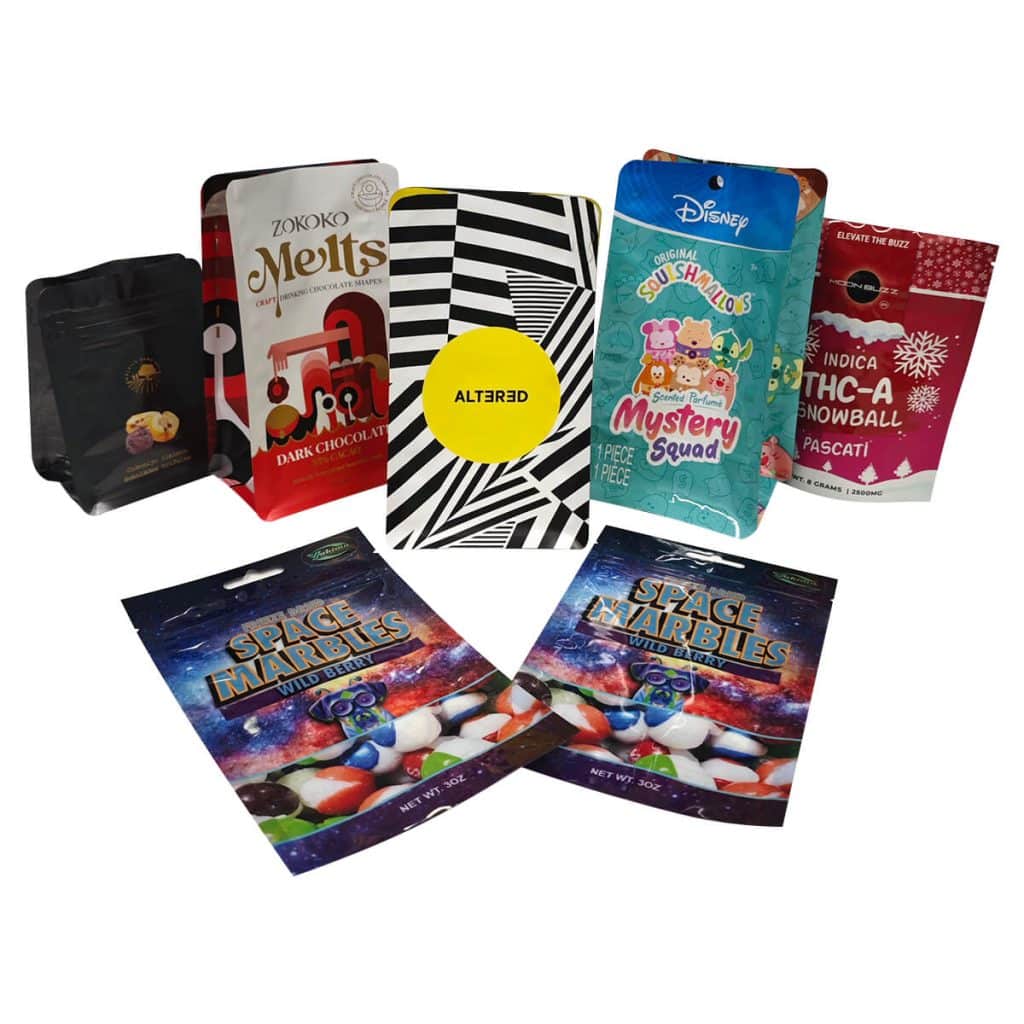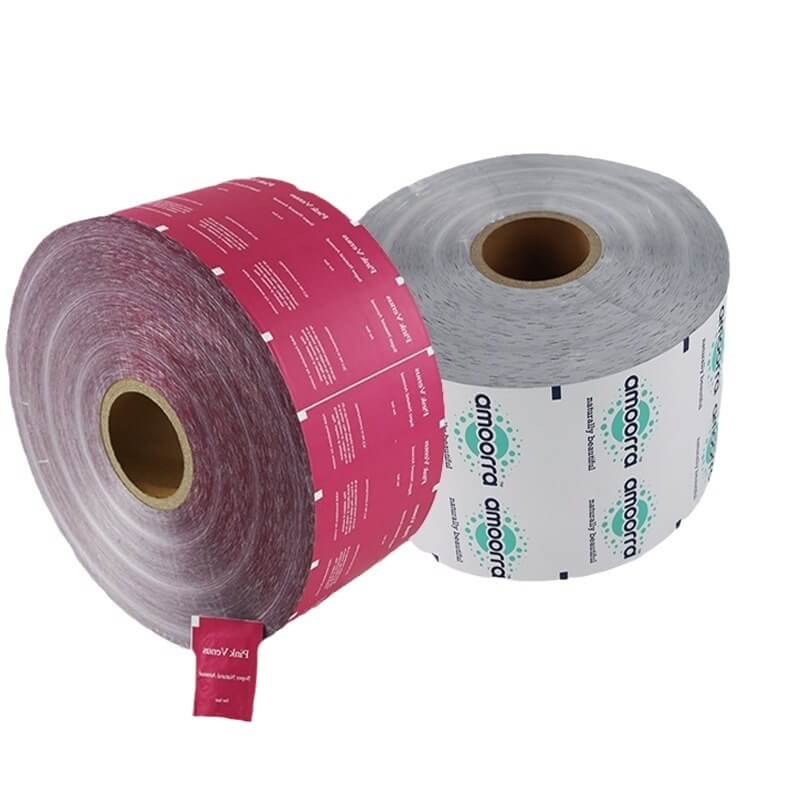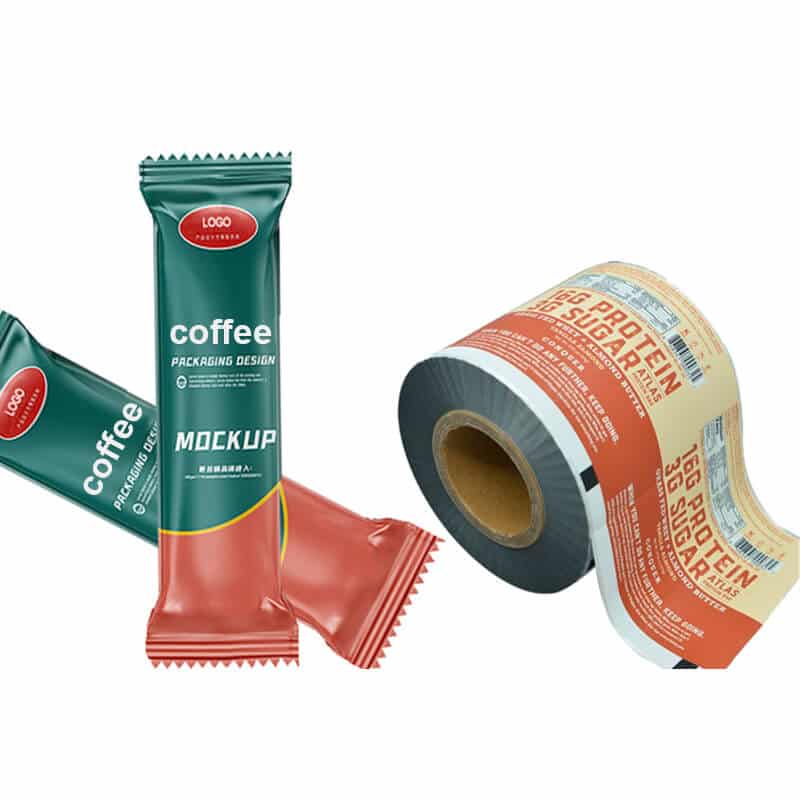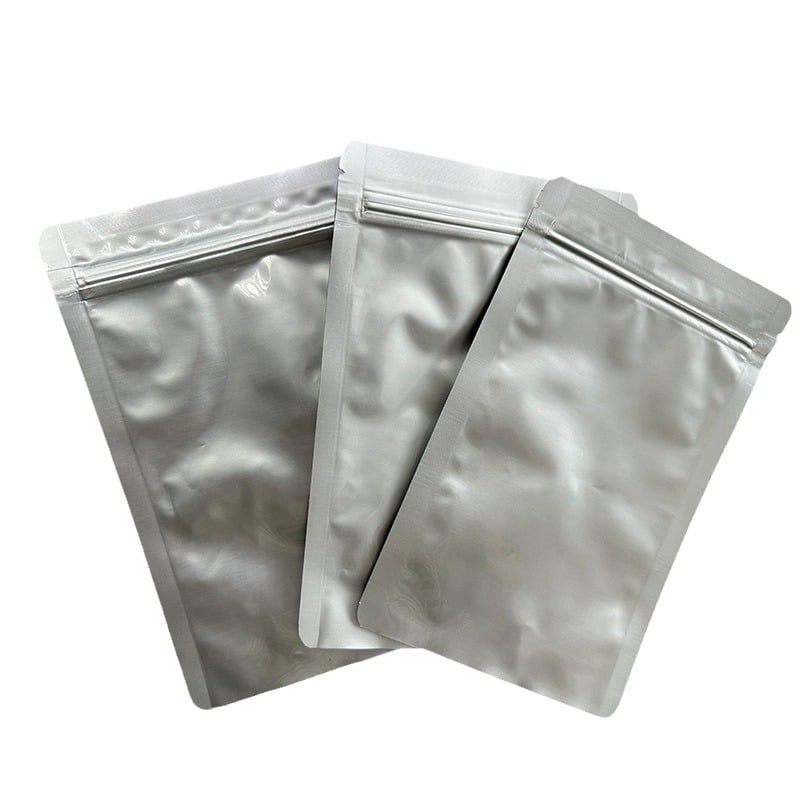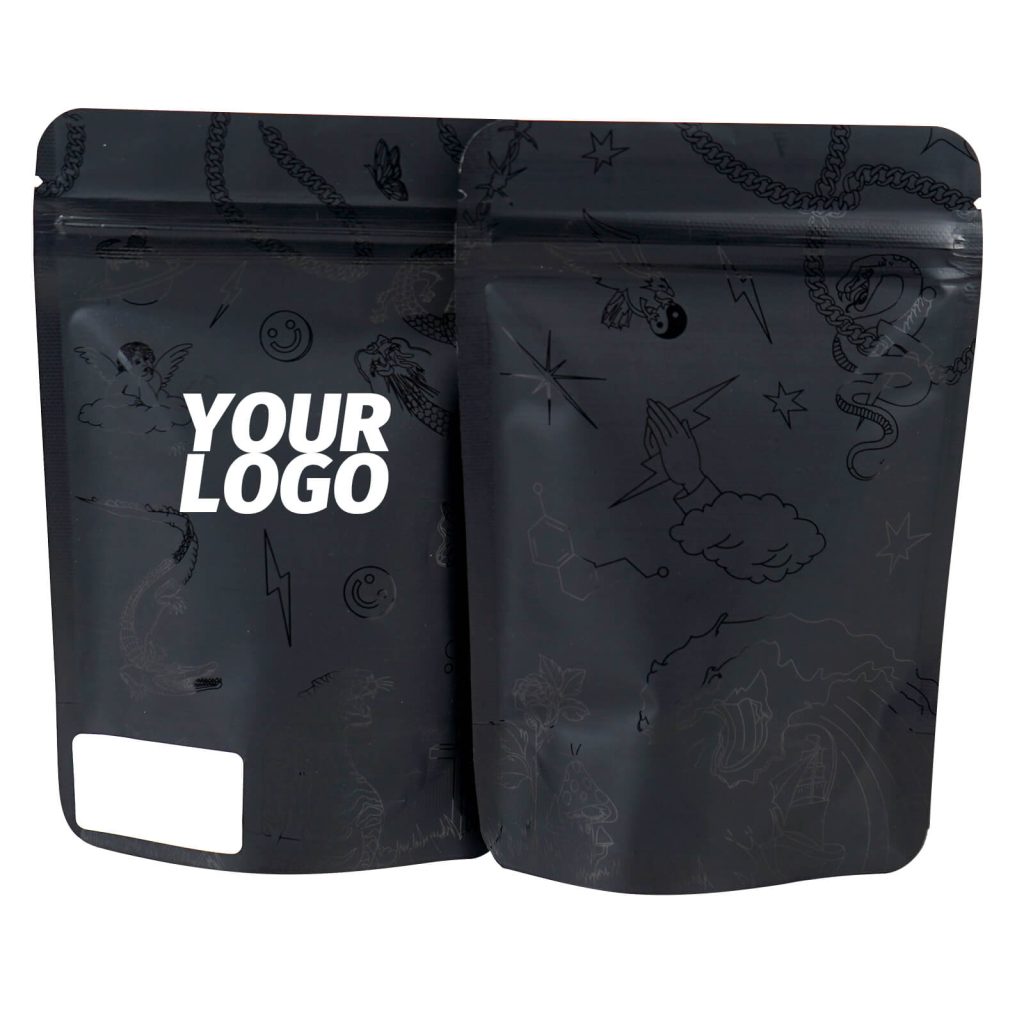Why is laminated film critical to food packaging?
Laminated film packaging is versatile and durable for food packaging. Its one-layered structure blocks air, oxygen, and light, preserves product freshness and flavor, withstands humidity and extreme temperatures, and extends shelf life. Customized printing visual characteristics can boost a company’s packaging brand, making laminated film popular in food packaging.
Additionally, biodegradable laminating films are the future of food packaging. Cutting-edge technology and eco-friendly techniques make these materials durable, protective, and environmentally beneficial.
Laminated films preserve product quality and shelf life.
Laminated films prevent food from spoiling. It works in three ways:
Moisture/oxygen/light barrier
Moisture resistance: Norberus uses EVA-coated laminates to prevent mold in baked goods and snacks. Polypropylene films can reduce water vapor transfer by 90%, prolonging shelf life by 30-50%.
Oxygen barrier: Aluminum foil laminates delay meat and dairy oxidation. According to the Food Packaging Forum, oxygen barrier films can improve fresh fruit shelf life by 2-4 weeks.
UV protection: Transparent films with UV blockers maintain the color and nutrients of coffee and juice.
Composite films limit moisture, oxygen, and light, preventing food spoilage, oxidation, and nutritional loss. Light, moisture, and oxygen barrier qualities of aluminum laminated films extend food shelf life, making them essential in the food business.
Laminated films preserve flavor and freshness.
Laminated films preserve flavor and texture. Example:
Laminate-lined coffee bags retain their aroma for 12 months, compared to 3-6 months for unlined bags.
Cheese packaged on PVDC-coated film had a 60% lower rancidity rate after 60 days than unlaminated cheese.
Prevent contamination and harm.
Puncture resistance: Nylon-reinforced films safeguard fragile foods during shipping. Data shows they reduce chip and cereal breakage by 40-60%.
Tamper-resistant: Sealing visible films protects products. A 2023 survey found that 72% of consumers shun tampered packaging.
According to Packaging Digest, laminate packaging extends perishable food shelf life by 2-5 times.
Laminated films prevent food contamination and damage during shipping. They include multiple layers for strength and puncture resistance, keeping food intact. The film’s thicker structure avoids ripping and damaging products with sharp edges or corners.
Sustainable laminates’ future
Biodegradable laminates revolutionize the industry:
PLA films: Made from corn starch, these break down in 6-12 months, compared to hundreds of years for typical polymers.
Water-soluble films: Polysack uses PVOH coatings to make compostable packaging that breaks down in 24 hours under industrial composting conditions.
Laminate films improve brand image and appearance.
Laminating films benefit food packaging by protecting it, extending shelf life, and improving appearance. They keep products fresh by resisting moisture and oxygen. They also support personalized designs that attract consumers and distinguish brands on shelves.
Customizable colors/graphics/textures
Laminates can be personalized with colors, images, and textures. This customization lets firms build eye-catching packaging that complements their image.
Bold, distinctive designs: Laminate films let you print brilliant colors, complicated patterns, and metallic or imitation leather textures.
Our pouch manufacturing services include customizable printing with up to ten colors, UV, matte, tactile film, and other processes.
Anti-scratch/anti-fouling
Laminating films with anti-scratch and anti-fouling properties keep packaging looking professional. These coatings prevent fingerprints and smudges and keep the packaging looking good. Electronics and luxury products are packaged with laminating films.
Avoids fingerprints and smudges and keeps labels intact in humid situations.
Laminating labels keeps our coffee bags legible weeks later.
Product presentation transparency
Transparent PET/LLDPE mixtures let buyers view the food within. This transparency fosters confidence and appeal since consumers can see product quality and freshness.
We highlight coffee beans with foil windows and chips with transparent packaging to show freshness.
Composite Film for Food Packaging
Materials and technological innovations
Laminating films for food packaging incorporate advanced materials and processes that combine functionality, sustainability, and high quality. They utilize multilayer composites, sustainable alternatives, and advanced lamination processes to meet industry needs.
Multilayer composites (PE/PET/aluminum foil)
Multilayer composites in laminating films typically comprise polyethylene (PE), polyethylene terephthalate (PET), and aluminum foil. Each material has unique properties:
Polyethylene (PE): Flexible and moisture resistant.
Polyethylene terephthalate (PET) provides strength, transparency, and gas barrier properties.
Aluminum foil provides an effective barrier to light, oxygen, and moisture.
These materials are combined to create composite films with superior barrier properties, mechanical strength, and flexibility. For example, a typical construction might include a layer of PET (for stability), a layer of aluminum foil (for barrier protection), and a layer of PE (for flexibility and sealing).
For example, the three-layer polyethylene/aluminum foil/polyethylene film used in coffee bags can keep out oxygen for up to 12 months while ensuring breathability for the coffee beans.
Films that can come into direct contact with products (especially food and pharmaceuticals), PE films, CPP films, and VMCPP films can be put directly into the innermost layer to contact food. They are safe but require the raw material film to be food-grade.
Sustainable alternatives (biodegradable films)
The food packaging industry increasingly adopts sustainable options, such as biodegradable films, to minimize environmental impact. Biodegradable films are made from polylactic acid (PLA) derived from renewable resources such as corn starch. These films can break down naturally, reducing plastic waste.
Polylactic acid (PLA): a biodegradable polymer derived from renewable resources. It has good barrier properties and is compostable.
Paper Matrix Composites: combines paper with biodegradable polymers to create a sustainable packaging solution.
Environmentally Friendly Ingredients:
PBAT (polybutylene terephthalate adipate) breaks down into harmless compounds in compost.
PHA (Polyhydroxyalkanoate): naturally produced by bacteria and fully biodegradable.
rPET (recycled PET): repurposes plastic bottles into durable packaging.
According to Grand View Research, the global biodegradable packaging market was $1.1 billion in 2020 and is expected to grow at a compound annual growth rate (CAGR) of 6.6% from 2021 to 2028.
Advanced Lamination Processes
Advanced lamination processes are critical to producing high-quality laminating films. Standard lamination methods include hot melt lamination and solvent-free lamination:
Hot-melt lamination: Heat melts the adhesive between two film layers. This method is fast and provides a strong bond.
Solvent-free lamination: This method uses an adhesive that reacts and cures without solvents. It is more environmentally friendly and is becoming increasingly popular due to its low environmental impact.
These processes ensure that the layers of the laminating film are firmly bonded, providing excellent barrier properties and durability. The choice of lamination process depends on the specific requirements of the packaging application, such as the type of product being packaged and the desired shelf life.
Cost-Benefit Analysis
Initial Investment vs Long-Term Savings
Why It Pays Off:
Laminated films may cost more initially than basic plastics, but their durability and functionality lead to significant savings over time.
Example: A thin, multi-layer multilayer (used in potato chip bags) costs 15–20% more than single-layer plastic but lasts 3x longer on store shelves.
Data Highlight: Brands using NobelusNobelus’ND™ ‘ ND™ laminates report a 20% reduction in material waste due to stronger seals and fewer tears during shipping.
Key Savings Areas:
Transportation: Lighter films lower shipping costs.
Labor: Fewer damaged products mean less rework for factories.
Energy: Multi-layer Multilayer oxygen and moisture, reducing spoilage-related energy waste (e.g., refrigeration for dairy).
Laminated films: Mitigating Food Waste Costs
The Hidden Expense of Spoilage:
Food waste costs U.S. businesses $218 billion annually (ReFED). Laminated films combat this by:
Extending Shelf Life: A biodegradable PLA film (used in organic yogurt cups) extends shelf life from 7 to 21 days, cutting waste by 33%.
Protecting Freshness: Oxygen-blocking layers (common in coffee bags) prevent staleness, ensuring products taste as good as the day they were made.
ROI Example:
A bakery switching to tamper-evident lamination (with FDA-compliant adhesives) reduced customer returns due to contamination by 40%, saving $5,000/month in refunded goods.
ROI of Premium Packaging on Sales
Premium Looks = Premium Prices:
Consumers associate high-quality packaging with better products. Laminated films enable brands to:
Stand Out on Shelves: Glossy, holographic, or transparent films (like those used in premium snack boxes) grab attention and justify higher price points.
Build Brand Loyalty: Customizable prints (e.g., a coffee brand’s logo on a foil-backed bag) create memorable unboxing experiences.
Sales Boost Example:
A gourmet cheese brand switched to windowed laminated film (showcasing the product) and saw a 15% increase in impulse purchases at checkout.
Real-World Applications
Snack Foods: A 3-layer PET/Al foil/PE film (for chips) balances crunch preservation (0.05 extra cost per bag) with a∗∗500.10/bag in waste.
Organic Yogurt: A PLA-based film (compostable + transparent) appeals to eco-conscious shoppers, commanding a 20% price premium without raising production costs.
Frozen Meals: A microwave-safe laminate (with BRC-certified adhesives) ensures safe reheating, reducing customer complaints and returns.
The Bottom Line
While laminated films require a higher upfront investment, their ability to reduce waste, extend shelf life, and elevate branding delivers a net gain for businesses. For every 1spenton laminated packaging, companies typically save∗∗2–$3** in operational costs while boosting customer satisfaction and sustainability credentials.
Food Packaging Composite Film Sustainability
Food packaging films must balance protection, usefulness, and environmental responsibility as customers and authorities favor green practices. Sustainability is changing food packaging:
Sustainability drives food packaging film innovation, from compostable materials to carbon-neutral manufacture.
Recycling vs. Composting Films
Compostable Films
Materials: PBAT and PVA films that decompose into natural components under composting conditions. These materials are suitable for disposable food dinnerware and agricultural films.
Use case: Coffee shops package single-serving creamers in PBAT-based compostable bags. In industrial composting, these bags disintegrate in 60–90 days, minimizing landfill trash.
Recyclable film:
Material: Recycled PET or HDPE.
Example: A juice manufacturer converted to rPET composite film for its bottles, decreasing plastic waste by 80% and meeting recycling criteria.
Key difference: Recyclable films can be reused in production, whereas compostable films breakdown organically. UK brand NatureFlex offers flexible packaging.
Production carbon footprint reduction
A light film:
Technologies: Norberus’ DigiBOND technique uses thinner sheets without compromising strength.
A cereal box manufacturer cut package weight by 15%, cutting transportation emissions by 22% and saving $1.2 million yearly.
Laminate energy-efficiently:
Unheated water-based glues consume 30% less energy than traditional processes.
Cold lamination reduces production costs and carbon emissions for a pet food brand’s feed bags.
Solutions for Circular Economy
Recyclable design:
Clear labeling: “Recycled #1” or “Compostable” films inform consumers.
Case Study: A snack food manufacturer worked with TerraCycle to recycle its laminated potato chip bags at 90%.
A closed-loop system
Some companies turn non-recyclable film into biofuel.
An expired PLA film yogurt cup is sent to a factory that turns it into biofuel by a dairy cooperative. constructed from PLA film) to a plant that generates renewable energy.
Why Sustainability Matters
Regulation: The EU’s Single-Use Plastics Directive bans non-recyclable packaging by 2025.
Sustainable packaging appeals to 88% of customers (Nielsen data).
Cost savings: Sustainable films reduce waste and energy use, lowering long-term expenditures.
Specific food packaging laminated film applications
Laminated films can adapt to different food ingredients. Here’s how they handle category challenges.
Laminated films are optimized for crunchy nibbles and delicate dairy products.
Pouches (small parcels)
Application: Single-serve powder, liquid, or paste container.
Thin, puncture-resistant PE/Al foil laminated film.
Coffee creamers: PE/Al foil laminate pouches preserve fats and oils (Starbucks VIA packaging).
Water-resistant coating avoids caking in flavor blends (McCormick Individual Flavor Packets).
Strips
The goal is portable, tidy liquid/syrup packing. The laminated film in strip packs blocks moisture and oxygen.
Flexible PET/PE film: Resealable.
Products:
Child-safe travel hand sanitizer film.
Herbs de Provence fritters are excellent.
Chips/biscuits
Grease stains, moisture absorption, and flavor loss are issues. The composite construction blocks moisture and oxygen, extending shelf life. Chip, cracker, and thin cracker packaging are examples.
Solutions:
Frito-Lay’s oil-resistant potato chip bags use PE/PET film with a scratch-resistant layer.
Aluminum foil layer in cookie bags prevents spoiling (Pepperidge Farm “cling film”).
Cheese/sausage
Challenge: Oxygen spoils items.
Solution:
Babybel vacuum-sealed round cheese uses oxygen barrier film: PET/PA/EVOH composite film for sliced cheese.
Clear PE moisture barrier film for pre-packaged deli meats like Boar’s Head sliced ham.
Drinks
Challenge: Light and moisture diminish product flavor and scent. Films keep moisture out, keeping beverage taste and scent.
Solution:
Blackout aluminum foil laminating film for coffee bags (e.g., Starbucks K-Cup foil pouches).
Tea bags with BPA-free PE coating (Lipton’s Pyramid Tea Bags) are microwave-safe.
Frozen Cuisine
Food can become fragile and leak in extreme temperatures. Laminated films are preferred for frozen food packaging due to their durability and protection.
Solution:
Ice cream cartons like Haagen-Dazs pints use nylon-reinforced polyethylene (PE) laminate film.
Moisture barrier: PVDC-coated film for frozen items like Lean Cuisine trays.
Why specificity matters
Coffee bags’ metal foil protects flavor for 12 months, while cheese packaging’s air barrier prevents mold for weeks.
Health-conscious shoppers can trust milk containers with clear labels like “BPA-free”.
Cost-effectiveness: Ultra-thin PE film minimizes 40% material waste when packaging single-cup coffee capsules.
Roll film solution selection.
Like clothes, food laminating film must fit well, protect the contents, and look good.
This straightforward tutorial will help you get through the procedure.
Make your packaging safe, sustainable, and economical with these measures.
Product Needs Assessment
First: Know your product needs
Does your product need dry storage? chips, cereal
Does the product face high temperatures? (frozen foods, coffee)
Light: Does the product need UV protection? vitamins, oils
Oxygen: Does the product spoil? cheese, meat
Considering roll film functioning, customized generation is needed for multiple requirements.
Balance barrier needs and cost
Price vs. safety
Affordable: thin PE film for short-lived products like baked pastries.
Multilayer films (PE/aluminum foil/PET) for luxury snacks (pot chips).
ROI Tip: Compare lifetime (less waste = lower replacement costs) to upfront costs.
Roll film specialists
Why does expertise matter?
Experts design laminates to your demands (e.g., agricultural anti-fog coatings).
Certification: Meet FDA, BRC, or compostability criteria.
Take action:
Request samples: Real-world test laminates with your product.
Use cases
Chip/biscuit snacks
PE/PET laminates with anti-scratch coating (blocks grease, keeps crispness).
Enhanced shelf life: 3–6 months.
Cheese: Dairy products
Solution: Mold-preventing EVOH oxygen barrier film.
Advantage: 40% less spoiling.
Drinks: Coffee
Aluminum foil/PET laminated film (light and moisture protection).
More than 12 months of freshness.
Frozen food:
PE film with nylon reinforcement prevents frostbite.
Advantage: keeps texture after freezing.
As a specialist roll film producer, we can help you discover the right laminating film for packaging snacks, dairy, beverages, or frozen goods. Request a free consultation today!

